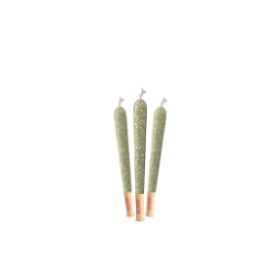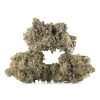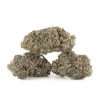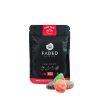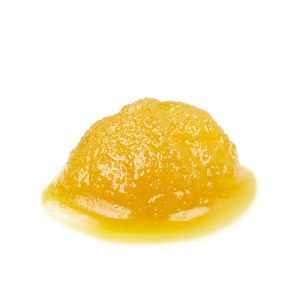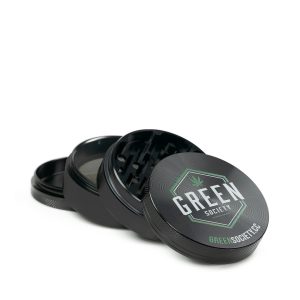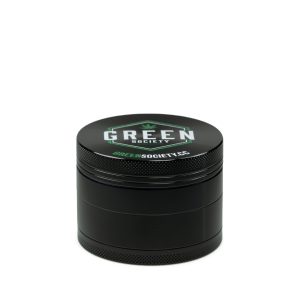CBD, Concentrates, Marijuana
A Guide to Concentrate Types
The ever-expanding cannabis industry comes with many innovative and exciting concentrate types that raise the bar for taking to new heights. A better understanding of the fundamentals of cannabis use can help consumers find the product that best suits their needs and preferences.
The technique of production or extraction, the concentration, the consistency, and also the chosen delivery system can all vary widely between different types of concentrates.
Cannabis concentrates have quickly gained popularity in recent years. It’s important to note that not all concentrations are the same. Also, there’s a lot to learn about consuming cannabis concentrates, what with the unfamiliar nomenclature, the detailed chemical profile descriptions, and the dizzying array of product options. Then, read on to learn about different types of cannabis concentrations and extracts.
What are Cannabis Concentrates?
A marijuana concentrate is a highly concentrated form of THC (Tetrahydrocannabinol) that typically takes the form of a sticky, buttery substance. Among the many names for cannabis concentrate are 710 wax, honey oil, budder, butane honey oil, dab, etc.
THC concentrates come in a variety of forms, much like dried cannabis flowers. Moreover, THC concentrates from the plant are extracted differently.
Cannabis Concentrates Extraction Methods
Cannabis concentrates are also called cannabis extracts due to their extraction method.
Cannabinoids, terpenes, and other compounds in cannabis can be extracted in different methods. As chemistry and medical studies of cannabis progress, people gain a deeper understanding of the plant’s curative and psychoactive effects. Cannabis concentrates rely on these compounds, which are isolated, analyzed, and employed in the manufacturing process.
How Active Compounds Were Extracted
Cannabis extraction can use CO2, butane honey oil (BHO), hydrocarbons, hydrocarbon extraction, or only temperature and pressure.
Creating concentrates
In creating concentrates, a portion of the plant or the entire cannabis plant may be used. The blooms, which have glands that secrete glue, are frequently the nicest sections. Some cannabis concentrate varieties will be used solely and will have various names as a result.
How the concentrate is formulated
Your concentrate might be anywhere between being extremely liquid and completely solid. The two most prominent examples would be standard cannabis oils and shatter, which have a consistency similar to glass.
Cannabis Concentrates Extraction Process
You can use high-tech lab equipment in manufacturing or get creative in the kitchen at home to create your marijuana concentrates. Flammable solvents are common since the resulting products have high THC concentrations, the effects persist for longer, and the process is economical and effective.
The strong marijuana concentration known as butane hash oil is typically made by heating marijuana with butane oil (BHO). Many methods, such as:
- Dry ice method
- Dry method
- Liquid method
- dry processing
- dry ice processing
- water-based processing
- combining pressure with heat
- using nonflammable carbon dioxide solvents
- using flammable solvents, including butane, propane, ether, or alcohol
Different Ways to Smoke Concentrates
“Dab” refers to the act of smoking cannabis concentrates. Consumers can smoke concentrates in various devices, such as a rig, vape pen, or nectar extractor.
Different types of dabbing techniques require various equipment and take different methods. So, look below to find out the many forms of smoking concentrates.
Dab rig
Concentrate users typically dab from a rig. Common tools for dabbing include a rig and a water filtration device similar to a bong made of glass or silicone.
A glass or metal attachment on one side of the rig is heated with a torch. A dab nail or banger is the name for this type of glass or metal bit. In this heated section, you may place a piece of concentrate directly or use a dab tool to scoop softer concentrates. Consumers can inhale the smoke from the rig’s top after the dab has come in touch with the heated piece.
Vape
Vaping cannabis concentrates is a trendy alternative to traditional dabbing. The cartridge is pre-filled with cannabis concentrate, and the battery vaporizes the substance.
Additionally, the whole unit is referred to as a cannabis pen or a weed vape. Mini, covert, and user-friendly weed vapes have revolutionized how people consume cannabis.
Nectar extractor
Nectar collectors are another option for inhaling dabs. A glass or silicone “straw” used for dabbing, often known as a “nectar collector.” Dabbing entails heating one end, tapping concentrates to melt them, and finally inhaling the vaporized substance through the other end of the gadget. Mobile nectar harvesters are quick, entertaining, and convenient.
Different Types of Cannabis Concentrates
There are notable distinctions between both, and seasoned cannabis enthusiasts typically favor one over the other. Thanks to developments in the concentrate industry, there are now different types of dabs to pick from. Many different cannabis extracts exist, but these are some of the more typical ones you might encounter.
1. Butane Hash Oil Concentrate
To make butane hash oil (BHO), the flammable solvent butane is used to separate the cannabinoids and terpenes from the plant material. There isn’t much complexity to butane extraction, but it is quite risky, so only experienced people should attempt it at home.
A filtration process follows extraction using butane (BHO) to remove any leftover contaminants in the final product, BHO. Additionally, purging removes all traces of solvent from an extract, making it safe for human consumption.
Users love BHO since it can refine into extremely potent THC concentrations. Other concentrations, such as nug run, hash, budder, shatter, and more, are made with BHO.
In all likelihood, BHO will be the most widely used cannabis concentrate. One of the earliest concentrations available was a shatter, a form of BHO. So, BHO has garnered a legion of devoted dabbers.
2. Wax Concentrates
The most prevalent type of concentration available; gets its name from its waxy texture. The quality of the cannabis and the extraction affect how the wax looks, and the concentration ranges of possible hues are rather wide.
Wax concentrates, sometimes called “budder,” is surprisingly cheap, considering their reputation as the superior method of enjoying and maintaining terpene compounds.
Due to its sticky nature, wax is best stored in silicone containers. Wax concentrates are the most sought-after dabbing concentration, but it requires special tools and techniques.
3. Rosin Concentrate
The purity, potency, and flavor of cannabis rosin make it a sought-after concentrate. It’s important to note that rosin is not extracted using a solvent like most other concentrations (such as butane). Instead, rosin is painstakingly extracted from plant components using only heat and pressure, such as dried flower, kief, and trimming.
This concentrate is easy to make at home because of the safe and straightforward production process. Cannabinoids and terpenes abound in rosin, which is why it’s frequently referred to as “solventless hash oil” (SHO). Most people choose this concentrate over others because it doesn’t undergo any chemical processing and has a thick consistency and a honey-like color.
4. Distillate Concentrate
The distillate is the most potent form of cannabis concentrate. While the THC content of shatters and waxes often falls in the 40-60% range, some distillates can reach a strength of 99%. Due to their thick texture, most distillates require special containers for storing and transporting concentrated liquids.
Refined oil that has been subjected to distillation is called a distillate. Unlike solventless alternatives like marijuana rosin, distillates often require a solvent throughout the production process. The cannabinoids and other phytochemicals of interest are then extracted by controlled manipulation of pressure and temperature.
Distillate can be made extremely pure by isolating and removing all cannabinoids except for one. These isolated substances are also known as concentrates. As of late, CBD isolation products have been popular, while THC has traditionally been the focus of isolate manufacturers.
5. Shatter concentrate
As the most widely consumed form of a cannabis extract, shatter also has the reputation of being the most cost-effective option.
Shatter is familiar to everyone who has come across a glass-like concentration resembling caramel candies. The word “glass” comes from the material’s smooth, transparent texture. It has high concentrations of both THC and CBD and is often produced using BHO and PHO extracts.
Though there are few variances, shatter is often very pure. To the untrained eye, shatter might look either clear and low in THC and CBD or cloudy and heavy in these compounds. Even so, if you buy shatter from a respectable manufacturer, it should contain 80% cannabinoids or higher.
6. Live Resin Concentrate
Due to the living resin extraction, live resin is one of the most carefully selected varieties of dabs. This full-spectrum extract has an unparalleled range of cannabinoids, terpene profiles, and fragrances.
Instead of utilizing dried and cured cannabis, “live resin” is made from plants that are plucked directly from the stalks and then flash-frozen.
7. Nugs
As with trim run, “nug run” refers to a marijuana concentrate produced from a special plant section. These are nuggets of top-shelf buds and flowers, loaded with beneficial compounds like terpenes and cannabinoids.
8. Cannabis Oil Concentrate
The extraction procedure for CO2 oils involves the use of carbon dioxide gas. A cannabis flower extractor tube receives supercritical carbon dioxide.
Oil concentrates, like BHO concentrates, remove beneficial compounds like cannabinoids and terpenes from the plant matter. Once these two components have been isolated, any leftover carbon dioxide is removed, leaving a gold concentrate.
Pre-filled vape cartridges and vape pens sold at dispensaries often contain CO2 oils. CO2 extraction at lower temperatures preserves terpenes and tastes.
9. Crumb/Honeycomb
A readily disintegrated concentration, crumble has the texture of powder or crumbles. It’s possible to smoke the crumble on its own. Crumble smokers, on the other hand, typically layer the concentrate all over a densely packed flower bowl. It looks like an under-mixed pie crust and ranges in hue from pale to deep yellow.
10. Hash
Hashish, also spelled hash, is a marijuana concentrate made without solvents. The trichomes of the cannabis plant are responsible for manufacturing the resin used to make hash.
The resin produced by these trichomes gives the cannabis matter a sugary sheen. A powdery “Kief” made from dried trichomes and resin is a popular smoking medium.
Different types of hash can also be made by using various techniques for extracting trichomes and their resin—different methods of hashish extraction yield cannabis with varied potency.
Types of Hashis
Discover what sets the three most common hash types apart from one another here:
Bubble hash
Bubble hash, or ice hash as stoners sometimes refer to it, is a type of hashish. Cannabis buds and ice water are mixed in stacked filtering bags as the initial step in making bubble hash. Trichomes and resin are extracted from the plant material by vigorously swirling the mixture.
Dry sift hash
Dry sifting is an alternative method for extracting trichrome and resin that does not require using liquids or cold temperatures. This Dry sift hash requires cannabis plant trimmings and bud harvesting as its starting materials. This bud and trim mixture will be finely chopped and filtered through a series of filters with progressively finer mesh sizes.
Repeatedly sifting will result in trichomes and resin being collected. Then, press them into a hash using low heat and pressure. Dry sift is the simplest technique to do at home. You can still enjoy smoking the kief from your hash if you don’t have the energy to press it.
Ice water Hash
The processes for making dry ice hash and ice hash are roughly the same. The dry ice approach, on the other hand, does not involve the use of any liquid at all.
Dry ice is an efficient tool for extracting cannabis resin and trichomes. Hash users claim dry ice yields purer and stronger effects than frozen hash.
Green Society: Cannabis Concentrate Providers
If you want to learn more about the various THC concentrates available, you can check out Green Society‘s online menus. You may learn more about the cannabis industry as a whole and find the cannabis products that work best for you by trying out various types of concentrates.

